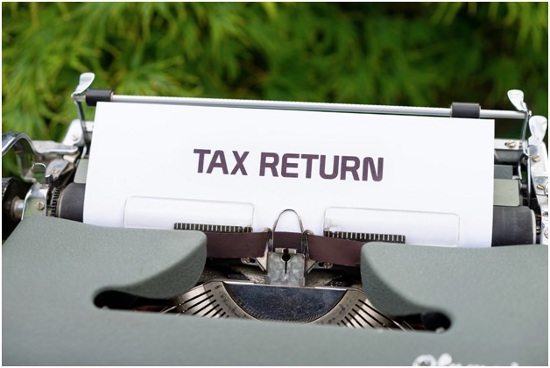In Canada, approximately 30,000 audits are conducted annually by the Canada Revenue Agency (CRA). This number highlights the importance of understanding and adhering to tax audit procedures. Although seemingly daunting, you can navigate the process smoothly with the proper knowledge and preparation.


Read on as we provide a comprehensive overview of the best practices for compliance with tax audit procedures in Canada. It aims to equip businesses and individuals with the tools and insights to engage with the CRA and resolve potential discrepancies efficiently and confidently.
We understand how critical it is to stay ahead of the curve in tax compliance matters, so let’s dive in and demystify the process.
Understanding Canada’s Tax System and Audit Framework
Canada’s tax system, operated by the Canada Revenue Agency (CRA), is as intriguing as it is essential. It functions on a self-assessment basis, meaning taxpayers are responsible for correctly filing their tax returns. Now, imagine this process as a rollercoaster ride.
The first section involves determining the tax base. It’s like climbing the rollercoaster’s first big hill. Here, the taxpayer’s income gets identified and quantified. This includes income from all sources, such as businesses, employment, and investments.
Next, we plummet down the hill, correlating with the calculation of tax liabilities. It’s thrilling as you calculate the tax owed, deducting any non-refundable tax credits.
Now, we’re in the belly of the beast, navigating the twists and turns of the ride. This equates to the filing of the tax return. It’s meticulous work, requiring precision and attention to detail.
Finally, the rollercoaster slows down as we approach the annual audit. The CRA conducts these audits to ensure compliance. If they find discrepancies, your ride can take an unexpected turn.
Key Reasons for Tax Audits in Canada
With the CRA bearing down, what triggers these audits? Let’s dive into the key reasons that bring about tax audits in Canada, adding an unexpected twist to your fiscal journey.
Random selection
Random selection is like a game of fiscal roulette, with the CRA’s system randomly picking out tax returns for review. It’s the unpredictable wildcard in the audit process, keeping taxpayers on their toes. This randomness ensures a fair, unbiased examination of returns, making every year a fresh start.
Discrepancies in filed returns
Discrepancies in filed returns are the ultimate red flags, catching the CRA’s attention immediately. These inconsistencies, whether errors, omissions, or stark differences from the previous years’ data, may invite an audit.
Informants and third-party tips
Informants and third-party tips serve as the CRA’s secret agents in their mission for fiscal transparency. These reliable sources often unveil hidden fiscal discrepancies, leading the CRA to conduct an audit.
History of non-compliance
A history of non-compliance is also a major red flag. Once caught, escaping the CRA’s scrutiny becomes a challenge. Repeat offenses flag you as a risk, leading to frequent and rigorous audits.
Best Practices To Ensure Compliance on an Audit
You can ensure total compliance on an audit when you’re armed with the right strategies. Let’s explore the best practices to ensure seamless compliance during an audit, turning this daunting process into a manageable task.
Keeping detailed records
Maintaining meticulous records is like assembling an intricate jigsaw puzzle, each piece crucial to the overall picture. Detailed, accurate documentation can transform the audit process from an ominous cloud into a navigable journey, easing interactions with the CRA while enhancing your financial understanding.
Understanding tax deductions and credits
Understanding tax deductions and credits unlocks potential savings. It’s about understanding the nuances of these fiscal instruments, which can significantly reduce your tax liability. With proper knowledge, you can transform tax season from a dreaded event into an opportunity for financial optimization.
Regularly consulting with a tax professional
Regular consultation with a tax professional is your fiscal compass, guiding you through the tumultuous seas of taxation. Their seasoned insights can help decode complex adhering to tax audit procedures, ensuring you’re on the most efficient financial course. Like a lighthouse in a storm, their expertise can steer your financial ship in the right direction.
Responding promptly to CRA requests
Prompt response to CRA requests keeps the audit process on track, prevents late penalties, and demonstrates your commitment to transparency.
The Path Forward for Canadian Taxpayers
Understanding and navigating Canada’s tax system might seem a daunting task. Yet, armed with knowledge and a proactive approach, it becomes a journey of empowerment. Regular record-keeping, comprehension of tax credits and deductions, consulting with tax professionals, and prompt responses to CRA inquiries are your keys to smooth sailing.
Remember, the path forward for Canadian taxpayers is not to evade the fiscal rollercoaster but to master the ride. With the right strategies, you can turn tax season into an anticipated event, unlocking potential savings and fiscal optimization.
The CRA tax audit process need not be considered an adversary. Instead, see it as a partner for financial transparency. Embrace, learn from, and use it to strengthen your financial health.

























